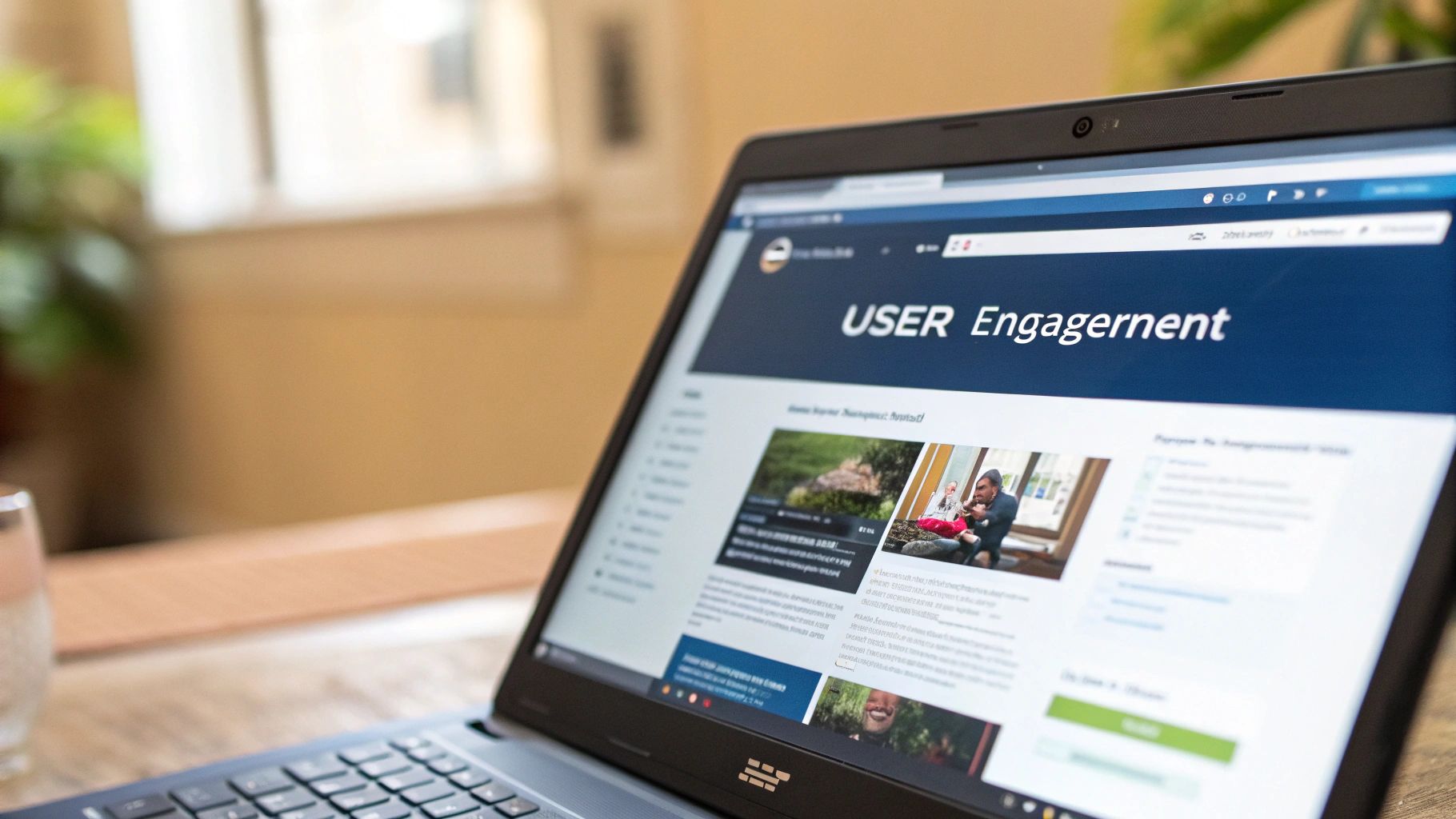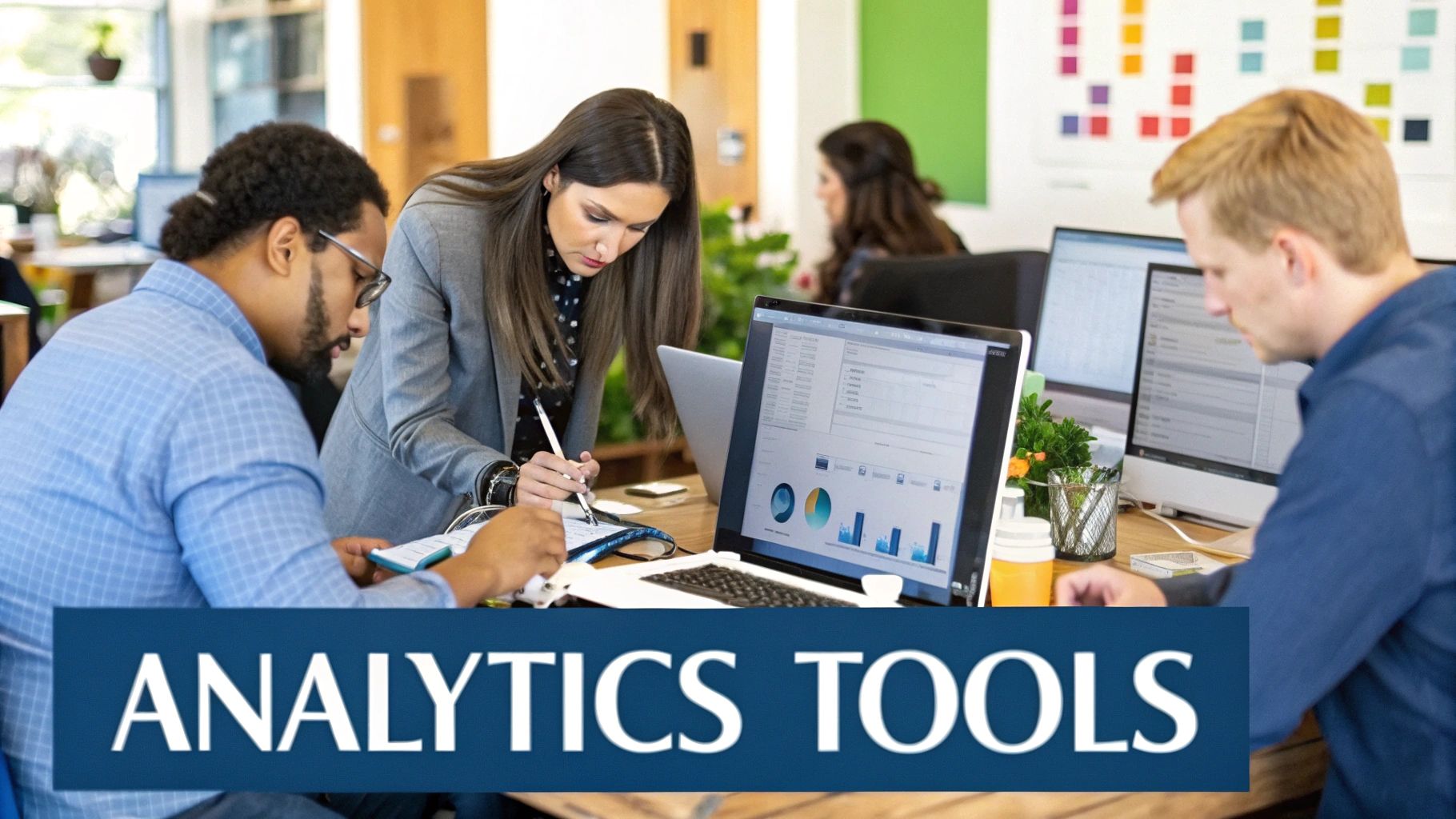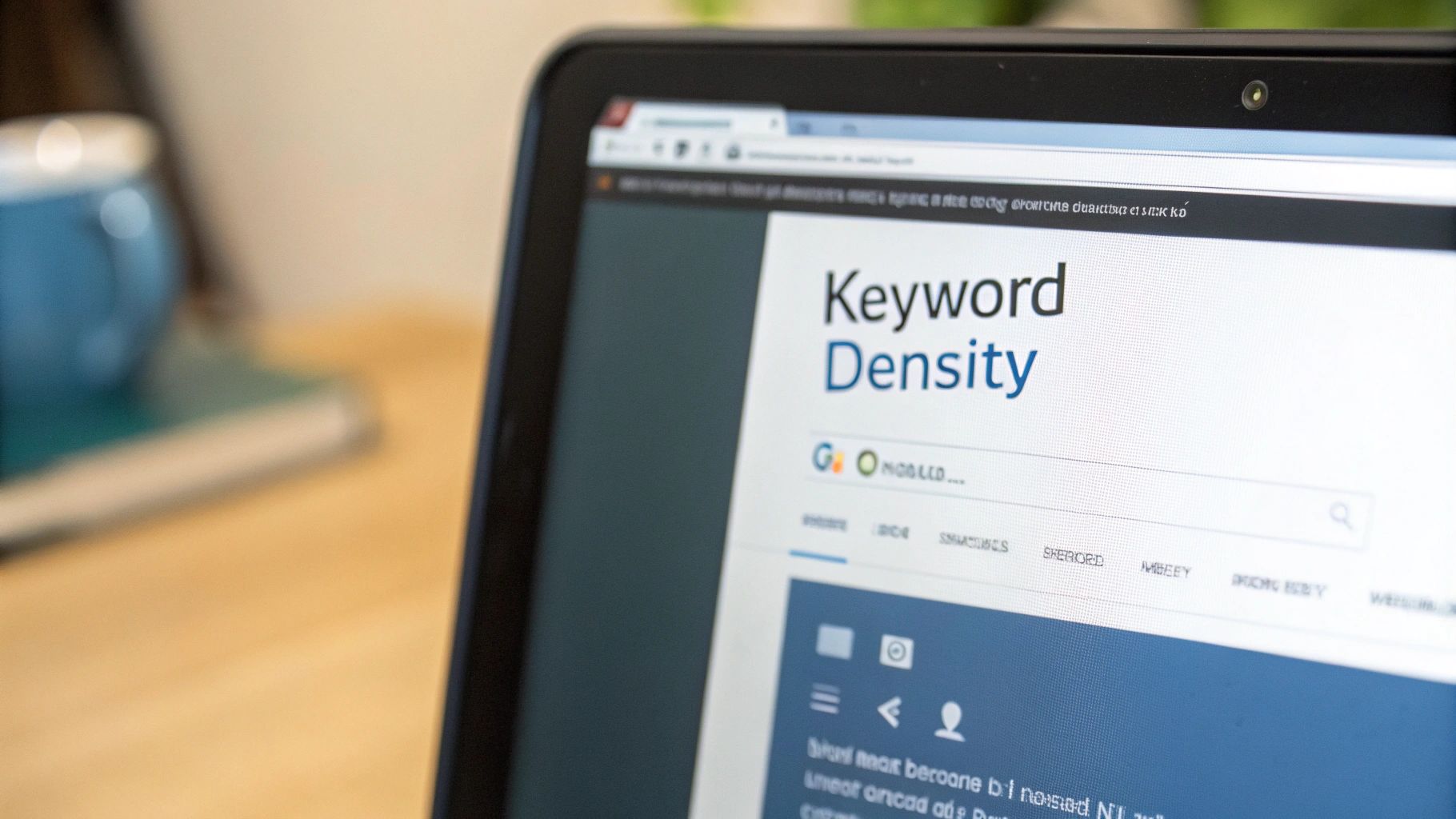How to Optimize Websites: A Complete Guide to Better Performance and Rankings
Understanding the Impact of Website Speed
When it comes to creating a successful website, speed is everything. A fast website isn't just a nice bonus – it's essential for keeping visitors engaged and driving real business results. Research consistently shows that slow loading times drive people away, costing you valuable opportunities to connect with potential customers.
Why Website Speed Matters
Think about your own experience browsing online. When you click a link and the page takes forever to load, what do you do? Like most people, you probably hit the back button and try somewhere else. The numbers back this up – studies have found that just a one-second delay can reduce conversions by 7%. For mobile users, the stakes are even higher, with 53% abandoning sites that take over three seconds to load. As more people browse primarily on phones and tablets, having a fast mobile experience has become crucial.
The Speed Advantage of Top Performers
The most successful websites understand this reality and make speed a top priority. Take Google for example – their pages typically load in under a second. Looking at top-ranking sites overall, the average load time is around 1.65 seconds. This sets the bar for what users expect. When visitors come to your site, they're comparing that experience to the instant gratification they get from industry leaders. E-commerce sites that optimize for speed often see direct improvements in sales and engagement.
Identifying and Addressing Performance Bottlenecks
Making your website faster requires systematically finding and fixing what's slowing it down. Common culprits include oversized images, bloated code, and inefficient server setups. The good news is there are plenty of tools available to help diagnose these issues. Simple changes like compressing images and combining files can make a big difference. For instance, reducing HTTP requests by merging CSS and JavaScript files helps pages load more smoothly.
Real-World Examples of Speed Optimization
The proof is in the results – businesses that invest in speeding up their sites see clear benefits. Case studies consistently show improvements across key metrics like conversion rates, bounce rates, and search rankings after speed optimization. With 43% of small businesses planning to improve their website performance, it's becoming an essential way to stay competitive. The message is clear: in an environment where users expect instant results, a fast website gives you a real advantage over slower competitors.
Mastering Technical SEO Fundamentals
Technical SEO provides the essential foundation that makes all other optimization efforts possible. When you get the technical elements right, search engines can properly crawl, understand and index your website content. This allows your pages to appear correctly in search results and reach your target audience effectively.
Core Web Vitals and Technical Foundations
Getting your Core Web Vitals right is key for technical SEO success. These metrics directly measure how users experience your site – from how fast it loads to how smoothly it runs. For instance, Largest Contentful Paint (LCP) tells you if your main content loads quickly enough, while First Input Delay (FID) shows if your site responds promptly when users interact with it. By tracking and improving these metrics, you help search engines recognize that your site provides a good experience, which can boost your rankings.
Auditing Your Website's Technical Health
Regular technical audits help catch issues before they hurt your site's performance. Just like a mechanic inspects a car, you need to examine key aspects like crawling, indexing, site structure, and mobile-friendliness. This process reveals problems such as broken links, slow pages, and duplicate content that can drag down your search rankings. Tools like Debugbar can help pinpoint exactly what needs fixing. With a systematic approach to identifying and resolving technical issues, you can keep your site running smoothly.
Schema Markup and Mobile Optimization
Adding schema markup helps search engines better grasp what your content means. This code tells search engines important details about your business, products, and content. For example, product schema can display prices and ratings directly in search results, making your listings more appealing to potential customers. Mobile optimization is equally critical, since most searches now happen on phones and tablets. Your site needs to load fast and look great on small screens. This means using responsive design that adapts to different devices, optimizing images for quick loading, and testing thoroughly on mobile. When you nail both schema markup and mobile experience, you make it easier for search engines to understand and rank your content while also keeping mobile visitors happy and engaged.
Building Authority Through Strategic Backlinks
Once you've fine-tuned your technical SEO and site speed, it's time to focus on building quality backlinks to your website. Search engines view backlinks as endorsements from other sites, making them essential for improving your rankings and visibility. While having many backlinks helps, what really matters is getting links from reputable, relevant websites in your field.
Identifying Potential Link Partners
To start building backlinks strategically, first identify websites that would make good linking partners. Look for sites that cover topics related to yours – for example, if you run a cooking blog, connect with food photographers, nutrition experts, and recipe developers. Quality matters more than quantity here. Using tools like Debugbar can help you evaluate potential partners by checking their domain authority and other key metrics before reaching out.
Creating Genuinely Link-Worthy Content
The best way to earn backlinks is by publishing content that other sites naturally want to reference. This means going beyond basic blog posts to create truly valuable resources. Original research, detailed guides, helpful tools, and compelling stories tend to attract links naturally. For instance, conducting and publishing your own industry survey is much more likely to get cited than writing a general overview article. With research showing that 95% of pages have zero backlinks, exceptional content helps you stand out.
Building Relationships and Promoting Your Content
Getting quality backlinks requires building real connections with other site owners and content creators. Start by engaging genuinely with their work – leave thoughtful comments, share their posts on social media, and participate in industry discussions. These relationships make it more likely they'll want to link to your content later. When you have great content to promote, reach out personally to relevant sites that might find it useful. Focus on how your resource could benefit their readers rather than just asking for links.
Developing Sustainable Link-Building Practices
Building authority through backlinks is a gradual process that requires consistency and patience. Skip any quick-fix schemes that could get your site penalized. Instead, commit to regularly creating excellent content, nurturing industry relationships, and promoting your work appropriately. Just as a house needs a solid foundation, your site needs a strong backlink profile built properly over time. Keep in mind that the average page ranking on Google's first page is over two years old – this shows that sustained effort pays off in the long run.
Dominating Local Search Results
For businesses with physical locations, succeeding in local search is essential after building your technical foundation and earning quality backlinks. Local search optimization helps you reach customers searching specifically in your area. When done right, it connects you with people actively looking to visit local businesses like yours.
Optimizing Your Google Business Profile
Your Google Business Profile acts as your digital storefront and is crucial for local visibility. Research shows businesses with complete profiles get 70% more in-store visits. Make sure to include accurate contact details, hours, photos of your business, and actively encourage customer reviews. Think of your profile as the online version of your physical storefront – it should give customers all the key information they need while making a great first impression.
Creating Location-Specific Content
To really connect with local customers, create content that speaks directly to your community. A San Francisco bakery, for example, could write blog posts about neighborhood food festivals, share customer favorites from different districts, or give tips about finding authentic sourdough in the city. This type of content not only helps you show up in local searches but establishes you as a trusted neighborhood resource. Remember to naturally include location terms throughout your website to help search engines understand where you operate.
Leveraging Mobile Search Trends
With 57% of local searches happening on phones, having a mobile-friendly website isn't optional anymore. Your site needs to load quickly and be easy to use on small screens. Put yourself in your customers' shoes – someone searching on their phone usually wants quick access to your address, directions, or phone number. Make this information prominent and easy to find on mobile. A smooth mobile experience helps capture customers searching while they're out and about.
Building a Comprehensive Local SEO Strategy
Success in local search comes from combining these elements into one cohesive approach. Stay on top of customer reviews and respond thoughtfully. List your business accurately across online directories. Create helpful content focused on your local area. When all these pieces work together smoothly, you can effectively reach nearby customers looking for businesses like yours. Given that 46% of searches have local intent, investing time in local SEO helps you connect with the right customers at the right time.
Creating an Accessible User Experience
A well-ranked website needs more than just technical optimization – it must provide a great experience for all visitors, including those with disabilities. Making your site accessible improves usability across the board while helping you reach a wider audience that may currently be underserved.
Understanding Web Accessibility
Web accessibility means ensuring your site works well for people with different needs and abilities. This includes visitors who are blind or have low vision, those who are deaf or hard of hearing, people with limited mobility or motor control, and individuals with cognitive differences like dyslexia or autism. Unfortunately, about 90% of websites still have barriers that make them difficult or impossible to use with assistive technologies, excluding many potential users.
Auditing Your Site for Accessibility
Just as you'd check your site's technical performance, examining accessibility is essential. Start by reviewing your pages against the Web Content Accessibility Guidelines (WCAG), which provide specific criteria for different compliance levels (A, AA, and AAA). While automated tools can help spot issues, manual testing gives you the most complete picture. Recent studies show that over 96% of home pages fail basic WCAG 2 requirements, so there's much room for improvement.
Implementing Inclusive Design Practices
Small changes can make a big difference in accessibility. For example, using strong color contrast helps users with vision impairments read your text more easily. Adding descriptive alt text to images allows screen readers to convey visual content. Including captions and transcripts makes audio and video content available to deaf users. These adjustments are like curb cuts on sidewalks – designed to help wheelchair users but beneficial for many others too.
Measuring the Impact of Accessibility
Track how accessibility improvements affect your site's performance by monitoring metrics like bounce rates for users with assistive technologies. Get direct feedback through user testing and surveys to identify what's working and what still needs work. This data helps show the business value of accessibility while creating a better experience for everyone. Making your site more accessible isn't just the right thing to do – it's good for engaging users and growing your reach.
Using AI to Improve Website Optimization
Once you have quality content, strong backlinks, and solid local SEO in place, artificial intelligence (AI) tools can help take your website optimization further. While there's a lot of hype around AI, it's important to focus on practical applications that measurably improve performance. Here's how successful websites combine AI capabilities with human expertise to create more powerful optimization strategies.
Choosing Effective AI Tools for SEO
The most successful AI implementations start by identifying tools that enhance your current workflow. Rather than replacing human judgment, AI works best as a smart assistant. For instance, AI-powered keyword research can surface valuable long-tail phrases that humans might overlook, helping you reach new audiences. Some tools also excel at suggesting improvements to readability and semantic relevance. However, blindly following all AI recommendations often leads to unnatural content. Human oversight ensures your content stays authentic and maintains your unique brand voice.
Creating Content with AI and Human Input
AI is great for generating outlines and first drafts, but human writers need to refine that output for style, clarity and emotional connection. Just like an architect creates blueprints that construction crews bring to life, AI provides helpful structure while writers add the engaging details that resonate with readers. This teamwork approach helps scale content creation without sacrificing quality or personality. The key is maintaining helpful, informative content while avoiding generic AI-generated text.
Using AI to Handle Technical SEO Tasks
AI really shines at automating repetitive technical SEO work. For example, AI tools can continuously scan for broken links that hurt search rankings, freeing up your time for strategy. AI also helps implement schema markup consistently across your site, making it easier for search engines to understand your content's context. This improves visibility and click-through rates in search results. By handling these routine tasks accurately and efficiently, AI builds a stronger technical foundation for your website.
Tracking AI's Impact on Your SEO Results
Like any marketing investment, it's crucial to measure the results of AI-powered optimization. Focus on concrete metrics like organic traffic growth, keyword rankings, and conversion rates to assess whether AI tools deliver real value. Regular analysis helps refine which AI capabilities you use and how you use them. This data-driven approach ensures AI meaningfully improves your website's visibility and business outcomes, rather than just chasing trendy tools. The goal is strategically using AI to enhance human efforts for better optimization overall.
Ready to take your website optimization to new heights? Debugbar provides the tools and insights you need to excel in search results and achieve lasting online success. Check out the platform today to see how Debugbar can help improve your website's performance.




Comments
Leave a comment